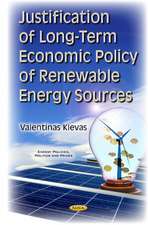Elements of hydrodynamicp propulsion: Mechanics of Fluids and Transport Processes, cartea 3
Autor J.A. Sparenbergen Limba Engleză Paperback – 8 noi 2011
Preț: 388.13 lei
Nou
Puncte Express: 582
Preț estimativ în valută:
74.27€ • 79.42$ • 61.92£
74.27€ • 79.42$ • 61.92£
Carte tipărită la comandă
Livrare economică 17 aprilie-01 mai
Preluare comenzi: 021 569.72.76
Specificații
ISBN-13: 9789400960886
ISBN-10: 9400960883
Pagini: 296
Ilustrații: XIII, 281 p.
Dimensiuni: 160 x 240 x 16 mm
Greutate: 0.42 kg
Ediția:Softcover reprint of the original 1st ed. 1984
Editura: SPRINGER NETHERLANDS
Colecția Springer
Seria Mechanics of Fluids and Transport Processes
Locul publicării:Dordrecht, Netherlands
ISBN-10: 9400960883
Pagini: 296
Ilustrații: XIII, 281 p.
Dimensiuni: 160 x 240 x 16 mm
Greutate: 0.42 kg
Ediția:Softcover reprint of the original 1st ed. 1984
Editura: SPRINGER NETHERLANDS
Colecția Springer
Seria Mechanics of Fluids and Transport Processes
Locul publicării:Dordrecht, Netherlands
Public țintă
ResearchCuprins
1. External force actions.- 1.1 Hydrodynamic forces on a moving body.- 1.2 Force actions and shed vorticity.- 1.3 External force fields and vorticity.- 1.4 Solution of linearized equation of motion.- 1.5 Vortex representation of solution.- 1.6 Singular force perpendicular to its velocity.- 1.7 Singular force in the direction of its velocity.- 1.8 Work done by external force field and moving body.- 1.9 Vorticity of a lifting surface, linearized theory.- 1.10 Bound vortex “ending” at a plate.- 1.11 Suction force at leading edge.- 2. The actuator surface.- 2.1 Linearized actuator surface theory.- 2.2 Actuator disk.- 2.3 Thrust deduction.- 2.4 Non linear actuator disk theory, 1.- 2.5 Non linear actuator disk theory, 2.- 2.6 Discussion of results and methods.- 3. The ship screw.- 3.1 The geometry of the ship screw.- 3.2 The screw blade with thickness and without load.- 3.3 The velocity field induced by rotating force.- 3.4 Screw blade of zero thickness, prescribed load, 1.- 3.5 Screw blade of zero thickness, prescribed load, 2.- 3.6 Some additional remarks.- 4. Unsteady propulsion.- 4.1 Some types of unsteady propulsion.- 4.2 Small amplitude propulsion, two dimensional.- 4.3 Solution of the Hilbert problem.- 4.4 Thrust and efficiency.- 4.5 Theoretical and experimental results.- 4.6 Elastically coupled profiles.- 4.7 The Voith-Schneider propeller.- 4.8 Large amplitude unsteady propulsion, rigid profile.- 4.9 Some additional remarks.- 5. Optimization theory.- 5.1 Lifting surface system.- 5.2 Energy extraction out of a disturbed fluid.- 5.3 The variational problem for lifting surface systems.- 5.4 Necessary condition for an optimum.- 5.5 Optimum wing in up- or downward flow.- 5.6 Classes of lifting surface systems, quality number.- 5.7 The ideal propeller.- 5.8 Comparisonof the quality number of optimum propellers by inspection.- 5.9 Energy extraction, translating rigid wing.- 5.10 Optimum energy extraction by rigid wing.- 6. Applications of optimization theory.- 6.1 Optimum screw propeller with endplates.- 6.2 Properties of the potential.- 6.3 Circulation distribution, thrust.- 6.4 Efficiency and quality number.- 6.5 Numerical results.- 6.6 Optimization of the sails of a yacht.- 6.7 Numerical results.- 6.8 Optimum unsteady propulsion, large amplitude, two dimensional.- 6.9 Angles of incidence, large amplitude, two dimensional.- 6.10 Optimum large amplitude unsteady propulsion, finite span.- 6.11 On the optimum Voith-Schneider propeller.- 6.12 On the optimum large hub propeller.- 7. On the existence of optimum propellers.- 7.1 Small amplitude flexible profile.- 7.2 Nonexistence of optimum added motion.- 7.3 Large amplitude rigid profile.- 7.4 The wagging motion.- 7.5 Nonexistence of optimum base motion.- 7.6 Small amplitude heaving motion.- 7.7 The optimization problem.- 7.8 Existence of optimum added motion.- 7.9 Large amplitude propulsion flexible profile.- Appendices.- A. The Hilbert problem.- A.1 The formulas of Plemelj.- A.2 The Hilbert problem for an arc.- A.3 Singular integral equations.- B. Curvilinear coordinates.- B.1 Tensor representation of some operators.- B.2 Two applications.- References.

























